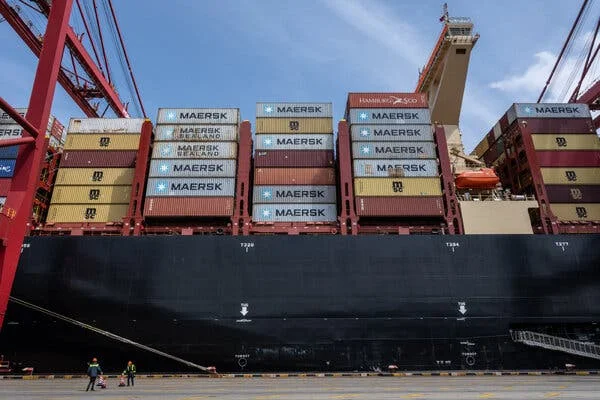
A Monumental Trade War: How Trump’s China Tariffs Are Reshaping the Global Economy
In a dramatic escalation shaking the foundations of global commerce, President Donald Trump’s sweeping tariffs on Chinese goods have set off a tit-for-tat battle that threatens to dismantle decades of economic interdependence. With tariff rates surging to unprecedented heights, Americans may soon face higher prices on everyday products, as the world braces for far-reaching economic consequences.

The new tariffs, topping out at an astonishing 145% on Chinese imports, mark a sharp escalation just days after an earlier round. Initially, Trump temporarily paused reciprocal tariffs for 90 days on most other countries, concentrating the full force of his trade penalties on China. The administration's stated goal is to restore U.S. manufacturing jobs lost to foreign competition, a move Treasury Secretary Scott Bessent acknowledges could mean higher costs in the short term. As he bluntly put it, reviving domestic industry outweighs the allure of "cheap baubles from China."
The impact on U.S. consumers may be immediate and widespread: roughly 77% of toys sold in America are made in China, along with vast quantities of clothing and electronics. These steep duties will likely ripple through retail prices, squeezing household budgets nationwide.
Beijing, for its part, has refused to back down. Chinese tariffs now hit American goods at rates up to 84%, vowing to "fight to the end" and framing U.S. actions as "unilateralism, protectionism, and economic bullying." In the words of China’s Commerce Minister Wang Wentao, the new levies “seriously damage the rules-based multilateral trading system" and undermine global economic stability.

China’s response strategy includes rallying international partners like the European Union, ASEAN members, and others, but many remain cautious about siding openly with Beijing. Australia, for instance, reaffirmed its independent approach to trade, while India and Russia have yet to join any unified stance.
Meanwhile, financial markets have seesawed dramatically. World indices soared, with Japan’s benchmark jumping over 9%, as investors temporarily cheered Trump’s tariff hiatus for allies. Yet U.S. futures slipped, oil prices declined, and Chinese shares edged up only modestly, reflecting ongoing uncertainty amid the deepening standoff.
The speed and scale of this economic clash are stunning. Where Trump’s first term trade battles stretched over months, recent tariff escalations have unfolded within days—driving tariff rates on Chinese goods from around 54% in early February to a staggering 145% by April.

Economic experts warn that the conflict risks an irreversible decoupling of the world’s two largest economies. “We are approaching a monumental train wreck breakup,” said Orville Schell of the Asia Society, noting that decades of intertwined trade relations may be “ripping apart.” The fallout could reverberate around the world, reshaping supply chains, realigning alliances, and redefining the global economic order.
As President Trump doubles down and China vows unyielding resistance, the questions loom large: Will either side blink? Can global institutions mediate a resolution? Or are we witnessing the unraveling of one of the most significant economic relationships in modern history—all to the detriment of worldwide prosperity?
What do you think about the escalating U.S.-China trade war? How might it affect your daily life or your community? Share your thoughts in the comments below.
Related issues news
Does China have tariffs?
China Customs assesses and collects tariffs. Import tariff rates are divided into six categories: general rates, most-favored-nation (MFN) rates, agreement rates, preferential rates, tariff rate quota rates, and provisional rates. As a member of the WTO, imports from the United States are assessed at the MFN rate.
Does China import from the USA?
What products does China import from the U.S.? China's top imports from the U.S. in 2023 were oilseeds and grains, followed by oil and gas. Oilseeds and grain exports fell by $7 billion from 2022 to 2023, and could fall even more substantially under the current tit-for-tat tariff spat between the U.S. and China.
When did US tariffs on China start?
An economic conflict between China and the United States has been ongoing since January 2018, when U.S. President Donald Trump began setting tariffs and other trade barriers on China with the goal of forcing it to make changes to what the U.S. says are longstanding unfair trade practices and intellectual property theft ...
How much does the US trade with China?
In 2024, U.S. exports of goods and services to China were $199.2 billion, and imports from China were $462.5 billion, resulting in a trade deficit of $263.3 billion.